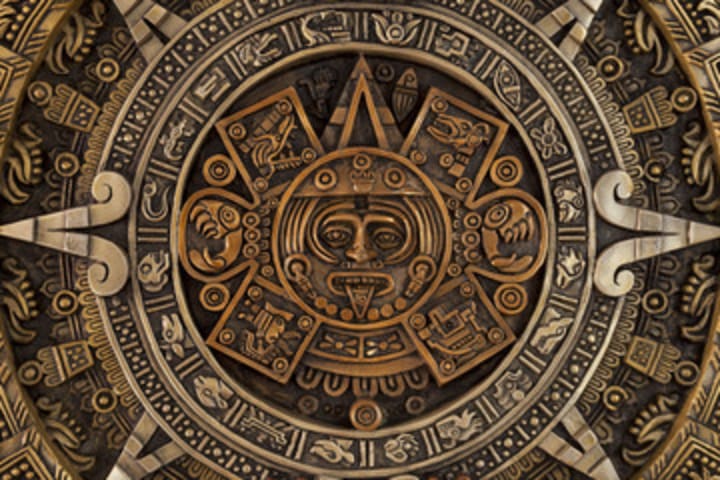The Rise and Fall of the Mayans: A Fascinating and Tragic History
The Mayan civilization, one of the most advanced and sophisticated civilizations of the ancient world, flourished for over two thousand years in Mesoamerica, covering modern-day Mexico and Central America. In this article, we will explore the rise and fall of the Mayans, examining the factors that contributed to their collapse and their enduring legacy in modern society.

The Mayan civilization, one of the most advanced and sophisticated civilizations of the ancient world, flourished for over two thousand years in Mesoamerica, covering modern-day Mexico and Central America. The Mayans are renowned for their remarkable achievements in science, mathematics, art, architecture, and culture. However, the sudden and mysterious collapse of the Mayan empire around the 10th century CE remains a fascinating and tragic mystery that has captivated scholars and laypeople alike for centuries. In this article, we will explore the rise and fall of the Mayans, examining the factors that contributed to their collapse and their enduring legacy in modern society.
Introduction to the Mayans: Their Origins and Spread
Geographical Location of the Mayan Civilization
The Mayan civilization was situated in Mesoamerica which comprises modern-day Mexico and parts of Central America. The Mayans primarily inhabited the Yucatan Peninsula, but their influence could be felt as far as Belize, Guatemala, and Honduras.
The Mayans' Ancient Ancestors and Early Development
The ancient ancestors of the Mayans were the Olmecs, a civilization that existed between 1400 BC to 400 BC. The Mayans themselves emerged around 2000 BC, and their early development was marked by the establishment of small kingdoms and city-states.
Spread of the Mayan Civilization to Different Regions
Around 250 AD, the Mayans began to expand their influence and establish trade routes with other regions. This led to the spread of their civilization to other areas, and they eventually became a dominant force in the region by 600 AD.
Flourishing of the Mayan Civilization: Achievements and Advancements

Mayan Society and Its Social Structure
The Mayan society was highly stratified and organized into classes ranging from nobles and priests to slaves and commoners. The ruling class was highly educated and enjoyed access to luxuries such as jade and obsidian.
Mayan Religion and Spiritual Beliefs
The Mayans had a complex and sophisticated religious system that was closely intertwined with their daily lives. Their pantheon featured various gods and goddesses that presided over different areas of life, such as agriculture, rain, and war.
Mayan Art, Architecture and Technology
The Mayans were renowned for their impressive art, architecture, and technology. They constructed elaborate pyramids, palaces, and ceremonial centers, many of which have survived to this day. They also developed a sophisticated writing system and were skilled in areas such as astronomy and mathematics.
Factors Contributing to the Mayan Collapse: Environmental and Societal Causes

Environmental Factors: Climate Change and Natural Disasters
Environmental factors such as droughts, floods, and hurricanes played a significant role in the decline of the Mayan civilization. These events caused food shortages, famine, and forced migrations that destabilized the society.
Societal Factors: Political Instability and Warfare
Political instability and warfare also contributed to the Mayan collapse. The society was heavily divided, and the ruling class often fought amongst themselves for power. Additionally, external forces such as invasion from neighboring societies and internal revolts weakened the Mayans.
Other Possible Factors: Disease and Famine
Other factors such as disease and famine have also been suggested as contributing to the fall of the Mayan civilization. Some researchers believe that diseases introduced by Europeans played a role in the eventual collapse of the society.
The Mysterious Disappearance of the Mayan People: Theories and Evidence

Possible Theories about Mayan Collapse
Various theories have been proposed to explain the collapse of the Mayan civilization, including climate change, warfare, and political instability. Some researchers also suggest that a combination of these factors may have contributed to their decline.
Archeological Evidence of the Mayan Collapse
Archeological evidence, such as abandoned cities, suggests that the Mayans experienced a sudden collapse around 900 AD. However, the exact cause of this collapse remains a mystery, and further research is needed to understand what happened to this once-great civilization.
Recent Discoveries and Modern Research on Mayan Collapse
Recent discoveries such as the uncovering of ancient texts and DNA analysis of Mayan remains have shed new light on their civilization's collapse. Researchers continue to investigate the causes of the Mayan decline, and these discoveries offer new avenues for understanding this fascinating and tragic history.>Reflections on the Tragic End of the Mayan Empire
Implications for the Future and the Importance of Learning from History
Mayan Legacy: Impact on Modern Society and Culture
The Mayans were known for their advanced agricultural practices, which have had a lasting impact on modern society. They developed techniques such as slash-and-burn agriculture, terracing, and irrigation, which allowed them to cultivate crops in areas previously thought to be unusable.
Their cultural heritage is also highly regarded in modern times. Through their art, architecture and music, the Mayans expressed their beliefs, customs and values. Their art is noted for its intricate designs, geometric patterns and vibrant colors. The Mayans also developed their own writing system and language, which is still used today by a small percentage of the population in the Americas.
Rediscovery of the Mayans: Archaeological Discoveries and Modern Research
The Mayan civilization was rediscovered in the 19th century by archeologists and explorers. Since then, numerous archaeological discoveries have been made that have shed light on their culture, society and history.
In recent years, key discoveries such as the Mayan city of Tikal and the tombs of their rulers have provided valuable insights into Mayan life. New technologies such as lidar and ground-penetrating radar have also allowed archeologists to uncover hidden cities and structures that were previously undiscovered.
Current research trends focus on understanding the causes of their collapse, their political and economic systems, and the influence of their culture on neighboring civilizations.
Lessons from the Mayan Civilization: Implications for Sustainable Development
The Mayans were known for their sustainable practices, such as their use of agroforestry, intercropping, and the management of water resources. These practices allowed them to live in harmony with the environment, and they were able to sustain their civilization for over a thousand years.
However, their collapse is an example of the consequences of unsustainable practices and exploitation of resources. The depletion of resources, loss of biodiversity, climate change, and social and political instability were factors that contributed to the collapse of their civilization.
The Mayans serve as a cautionary tale and provide lessons that are relevant to modern society. The importance of sustainable development, conservation of biodiversity, and the management of resources are essential for ensuring a sustainable future.
Conclusion: Reflections on the Tragic End of the Mayan Empire

The Mayan civilization was a fascinating and complex society that made notable contributions to agriculture, language, and culture. The tragic end of their empire serves as a reminder of the importance of learning from history and making sustainable choices for the future.
Their legacy lives on in the practices and traditions that have been passed down through the generations. By studying their civilization, we can gain insights into our own society and make informed decisions for a sustainable future. In conclusion, the rise and fall of the Mayan civilization is a captivating story of human achievement and tragedy. Despite their tragic end, the Mayans have left a profound legacy in world history, inspiring new generations of artists, scholars, and sustainable development practitioners. The lessons and insights from the Mayan civilization continue to shape our understanding of the past, present, and future of human civilization.
About the Creator
Krishna raj
"If your dreams don't scare you, they're too SMALL"






Comments
There are no comments for this story
Be the first to respond and start the conversation.